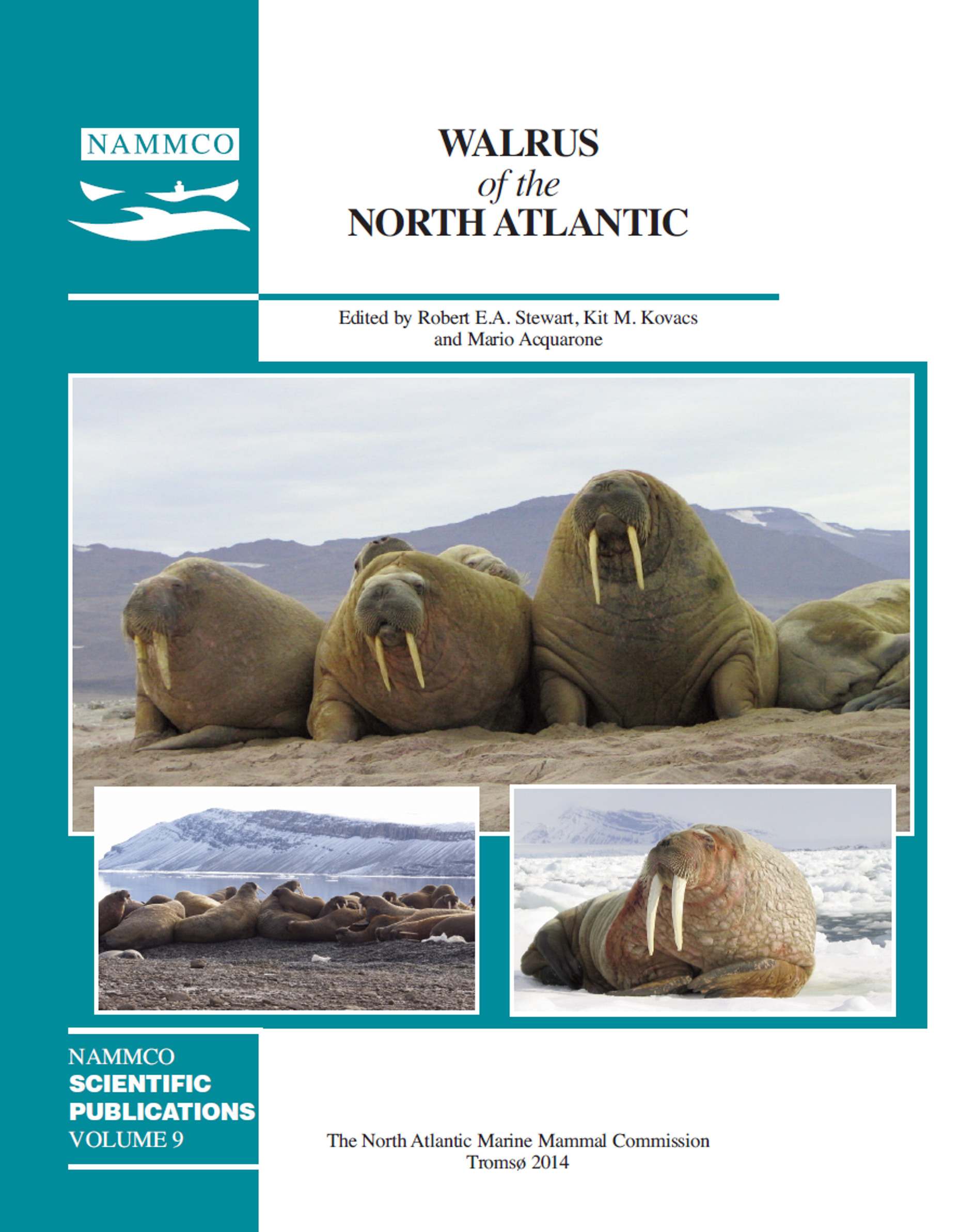A catch history for Atlantic walruses (Odobenus rosmarus rosmarus) in the eastern Canadian Arctic
DOI:
https://doi.org/10.7557/3.3065Keywords:
Atlantic walruses, Odobenus rosmarus rosmarus, catch history, hunting, CanadaAbstract
Knowledge of changes in abundance of Atlantic walruses (Odobenus rosmarus rosmarus) in Canada is important for assessing their current population status. This catch history collates available data and assesses their value for modelling historical populations to inform population recovery and management. Pre-historical (archaeological), historical (e.g., Hudson Bay Company journals) and modern catch records are reviewed over time by data source (whaler, land-based commercial, subsistence etc.) and biological population or management stock.
Direct counts of walruses landed as well as estimates based on hunt products (e.g., hides, ivory) or descriptors (e.g., Peterhead boatloads) support a minimum landed catch of over 41,300 walruses in the eastern Canadian Arctic between 1820 and 2010. Little is known of Inuit catches prior to 1928, despite the importance of walruses to many Inuit groups for subsistence. Commercial hunting from the late 1500s to late 1700s extirpated the Atlantic walrus from Quebec and the Atlantic Provinces, but there was no commercial hunt for the species in the Canadian Arctic until ca. 1885. As the availability of bowhead whale (Balaena mysticetus) declined, whalers increasingly turned to hunting other species, including walruses. Modest numbers (max. 278/yr) were taken from the High Arctic population in the mid-1880s and large catches (up to 1400/yr) were often taken from the Central Arctic population from 1899 -1911, while the Foxe Basin stock (Central Arctic population) and Low Arctic population were largely ignored by commercial hunters. Land-based traders (ca. 1895-1928) continued the commercial hunt until regulatory changes in 1928 reserved walruses for Inuit use. Since 1950, reported walrus catches have been declining despite a steady increase in the Inuit population. Effort data are needed to assess whether lower catches stem from declining hunter effort or decreased walrus abundance. The recent take of walruses by sport hunting has been small (n=141, 1995-2010), sporadic and local.
These landed catch estimates indicate the minimum numbers of walruses removed but do not account for under-reporting or lost animals that were killed but were not secured. Unreported and lost animals may represent a significant fraction of the total removals and must be considered in any modelling exercise. The sources, quality and completeness of the catch data vary widely over time and space and between the different hunt types. This variability confounds interpretation and contributes to the uncertainty that needs to be incorporated into any modelling. The data on Inuit subsistence catches before ca. 1928 are particularly fragmentary and uncertain.
Additional Files
- Supplement 1. Hudson’s Bay Company post journals and other archival materials examined for walrus data
- Supplement 2. Ship logbooks and journals examined for data on walruses
- Supplement 3. Oil yields from walruses
- Supplement 4: Subsistence and land-based commercial catches of walruses from the eastern Canadian Arctic
- Supplement 5: Sport catches of walruses from the eastern Canadian Arctic in 1995 through 2011
- Figure 1
- Figure 2a
- Figure 2b
- Figure 2c
- Figure 3
- Figure 4
- Figure 5
- Figure 6
- Figure 7
- Figure 8
- Figure 9
- Figure 10
- Figure 11
- Figure 12
- Figure 13
- Figure 14
- Figure 15
- Figure 16
- Figure 17
- Figure 18
- Figure 19
- Figure 20
- Figure 21
- Figure 22
- Figure 23
- Figure 24





